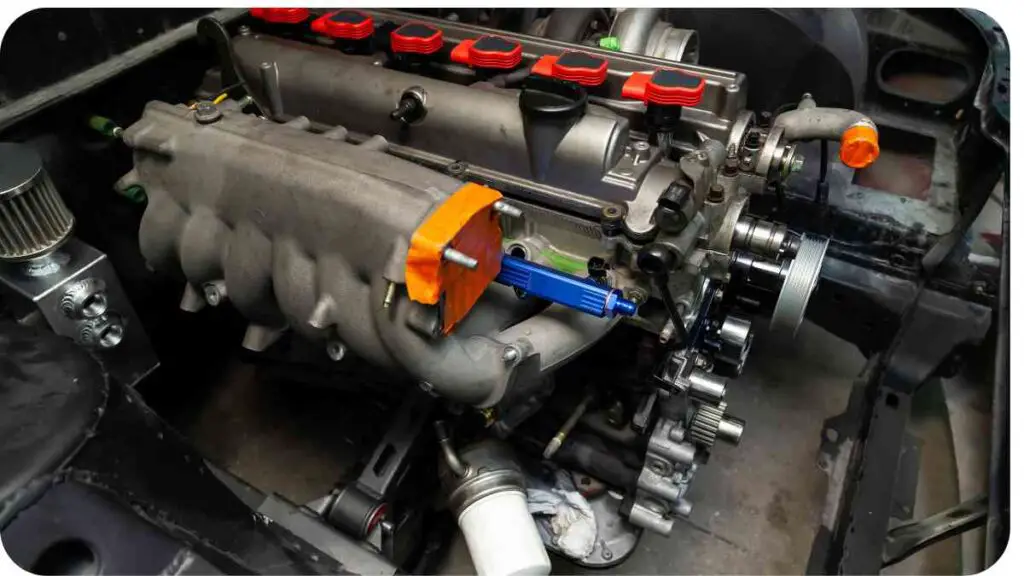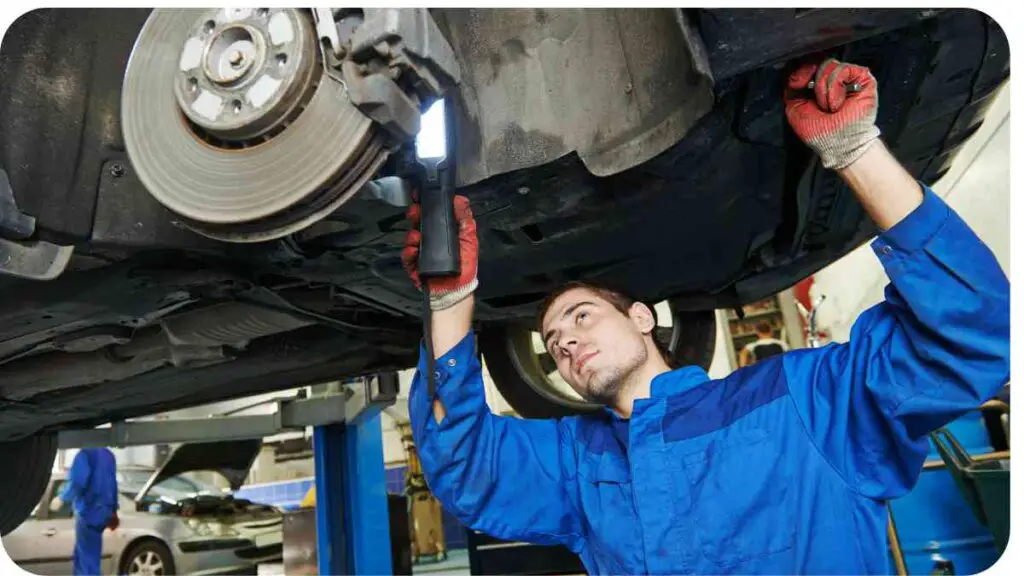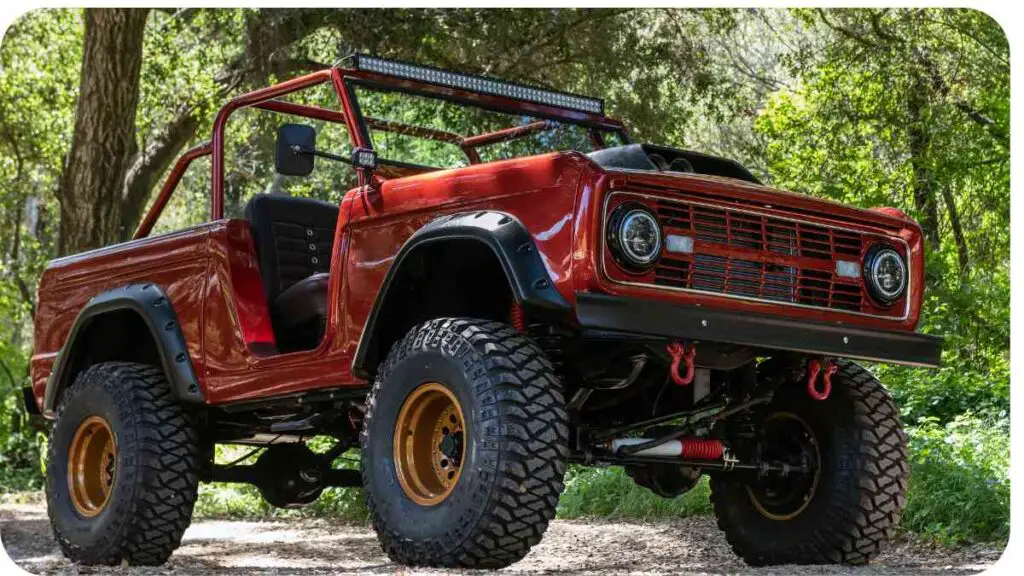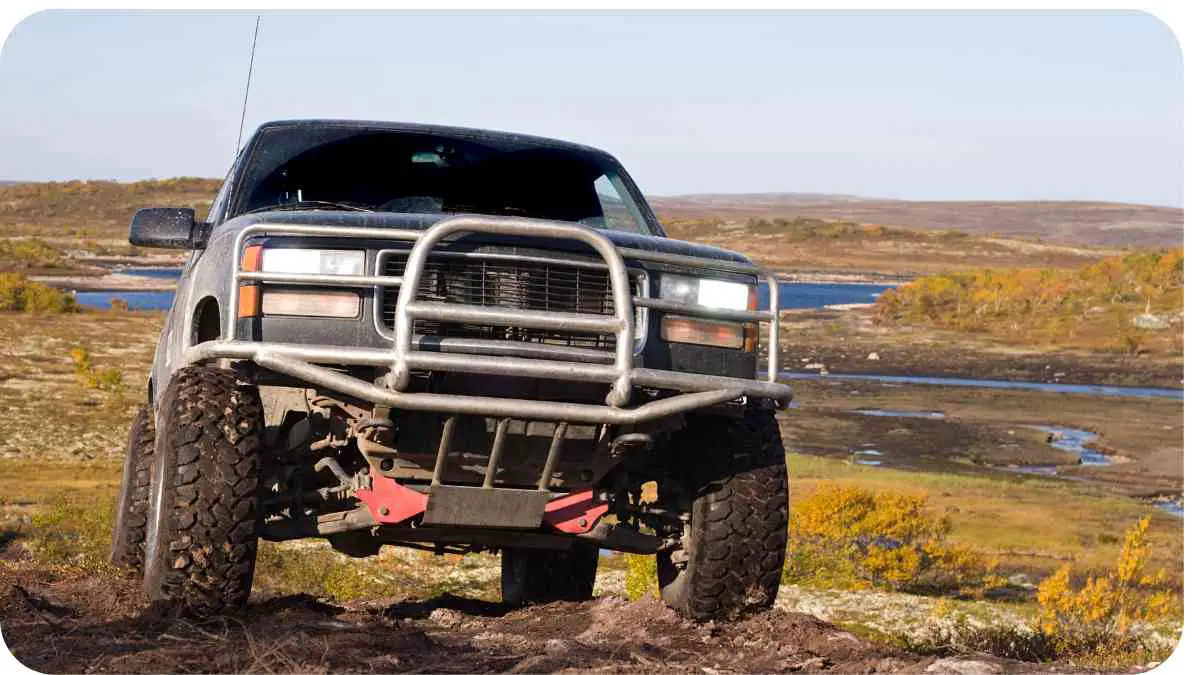Off-road enthusiasts know that maintaining their equipment is crucial for a seamless and safe adventure. In this comprehensive guide, we’ll delve into the essential steps of inspecting your off-road equipment, ensuring longevity, and preventing unexpected breakdowns.
Whether you’re a seasoned off-roader or a newbie, this guide will equip you with the knowledge to keep your off-road rig in top-notch condition.
| Takeaways |
|---|
| Regular inspections prevent unexpected issues |
| Safety should be a priority during inspections |
| Visual checks and functional tests are crucial |
| Regular maintenance extends equipment life |
| Troubleshoot minor issues for on-the-trail fixes |
| Document all maintenance activities |
| Professional help is necessary for major problems |
2. Importance of Regular Equipment Inspections

Regular inspections are the key to preventing mechanical surprises on the trail. Discover why a proactive approach to off-road equipment maintenance is essential for both performance and safety.
Off-roading excitement demands safety vigilance. Learn crucial safety tips to ensure your trail adventures are thrilling and secure.
3. Safety First: Preparing for the Inspection
Before diving into the nitty-gritty of inspection, let’s prioritize safety. Equip yourself with the necessary gear and secure your work area to ensure a risk-free examination.
3.1 Safety Gear Checklist
| Gear | Purpose |
|---|---|
| Safety Glasses | Eye Protection |
| Gloves | Hand Protection |
| Ear Protection | Noise Reduction |
| Steel-toed Boots | Foot Protection |
| Reflective Vest | High Visibility |
3.2 Secure the Work Area
| Steps | Safety Measures |
|---|---|
| Mark Hazardous Areas | Highlight potential risks |
| Use Cones or Barriers | Clearly define the inspection zone |
| Emergency Contacts | Keep contact details accessible |
| First Aid Kit | Always have one on-site |
4. Visual Inspection: The First Step

Begin your inspection journey by visually assessing crucial components of your off-road equipment.
Navigate challenging landscapes with confidence using essential safety tips. Be prepared for off-road challenges and enhance your driving skills for a safer and more enjoyable experience.
4.1 Exterior Components
| Component | Inspection Points |
|---|---|
| Body and Frame | Check for cracks, dents, or rust |
| Lights and Signals | Ensure all lights are functional |
| Winch and Bumper | Inspect for any signs of damage |
| Exterior Fasteners | Tighten or replace as needed |
4.2 Fluid Levels
| Fluid | Checkpoints |
|---|---|
| Engine Oil | Verify level and condition |
| Transmission Fluid | Check for proper levels and clarity |
| Brake Fluid | Inspect the level and color |
| Coolant | Ensure it’s at the recommended level |
4.3 Tire Inspection
| Aspect | Inspection Criteria |
|---|---|
| Tread Depth | Measure and ensure it meets safety standards |
| Tire Pressure | Check for proper inflation |
| Sidewall Damage | Inspect for cuts, bulges, or punctures |
| Spare Tire | Ensure it’s in good condition and properly secured |
4.4 Suspension System
| Component | Inspection Points |
|---|---|
| Shocks and Struts | Look for leaks or damage |
| Bushings and Joints | Inspect for wear and tear |
| Springs | Ensure they are intact and functional |
| Steering Linkages | Check for tightness and proper alignment |
4.5 Brake Check

| Component | Inspection Criteria |
|---|---|
| Brake Pads and Discs | Measure thickness and check for wear |
| Brake Lines | Inspect for leaks or corrosion |
| Brake Fluid | Ensure it’s at the recommended level |
5. Functional Checks: Ensuring Optimal Performance
After the visual inspection, dive into functional checks to guarantee your off-road equipment’s optimal performance.
Keep your off-road machine running smoothly with our comprehensive oil change guide. Discover step-by-step instructions for a hassle-free DIY oil change, ensuring peak performance on every adventure.
5.1 Engine Performance
| Aspect | Inspection Criteria |
|---|---|
| Starting and Idling | Check for smooth starts and steady idling |
| Acceleration | Ensure responsiveness and smooth acceleration |
| Exhaust Emissions | Inspect for unusual smoke or odors |
| Fluid Leaks | Look for any signs of leaks under the hood |
5.2 Transmission and Drivetrain
| Component | Inspection Points |
|---|---|
| Transmission Fluid | Ensure proper levels and clarity |
| Clutch System | Check for smooth engagement and disengagement |
| Driveshaft | Inspect for any unusual vibrations |
| Axles and CV Joints | Look for signs of wear and tear |
| Differential Fluid | Verify levels and condition |
5.3 Steering Mechanism
| Component | Inspection Criteria |
|---|---|
| Power Steering Fluid | Check for proper levels and condition |
| Steering Linkages | Inspect for tightness and proper alignment |
| Steering Wheel Play | Ensure minimal play and responsiveness |
5.4 Electrical System
| Aspect | Inspection Points |
|---|---|
| Battery | Check voltage levels and secure connections |
| Wiring and Connections | Inspect for frays, corrosion, or loose connections |
| Lights and Signals | Ensure all are functional, including indicators and headlights |
5.5 Exhaust System
| Component | Inspection Criteria |
|---|---|
| Muffler and Tailpipe | Check for damage or rust |
| Exhaust Leaks | Inspect for any signs of leaks or unusual noises |
6. Advanced Inspections: Digging Deeper
Now that the visual and functional checks are complete, it’s time to take a closer look at your off-road equipment. Advanced inspections involve examining undercarriage components and utilizing diagnostic tools.
Elevate your off-road experience by prioritizing regular maintenance. Explore the key steps and benefits of keeping your vehicle in top condition for optimum performance on and off the trail.
6.1 Undercarriage Examination
| Component | Inspection Points |
|---|---|
| Skid Plates | Inspect for damage and proper attachment |
| Suspension Components | Examine for wear, leaks, or damage |
| Steering Linkages | Check for any signs of stress or deformation |
| Fluid Leaks | Look for leaks from the transmission, engine, or differential |
6.2 Diagnostic Tools and Equipment
| Tool | Purpose |
|---|---|
| OBD-II Scanner | Check for engine codes and performance data |
| Tire Pressure Gauge | Ensure accurate tire pressure readings |
| Multimeter | Test electrical components and circuits |
| Compression Tester | Assess engine compression levels |
6.3 Common Off-Road Equipment Issues

| Issue | Possible Causes | Solutions |
|---|---|---|
| Overheating | Insufficient coolant, radiator issues | Check coolant levels, inspect the radiator |
| Poor Off-Road Traction | Worn-out tires, insufficient tire pressure | Replace tires, adjust pressure |
| Suspension Problems | Damaged shocks or springs | Replace damaged components |
| Electrical Malfunctions | Faulty wiring or connections | Inspect and replace damaged wiring, connectors |
7. Regular Maintenance Tips
Preventive maintenance is key to extending the life of your off-road equipment. Implement these regular maintenance tips to keep your rig in peak condition.
7.1 Fluid Changes and Top-ups
| Fluid | Maintenance Frequency |
|---|---|
| Engine Oil | Change every 3,000 to 5,000 miles |
| Transmission Fluid | Check and change as per manufacturer’s recommendations |
| Brake Fluid | Inspect and replace if necessary |
| Coolant | Flush and replace according to the maintenance schedule |
7.2 Lubrication Points
| Component | Lubrication Schedule |
|---|---|
| Suspension Bushings | Lubricate every 10,000 miles or as needed |
| Steering Linkages | Grease every 5,000 miles or as recommended |
| Driveshaft Joints | Lubricate every 10,000 miles or as needed |
| Hinges and Pivot Points | Regularly apply lubricant to prevent rust |
7.3 Cleaning and Rust Prevention
| Component | Cleaning and Protection |
|---|---|
| Undercarriage | Clean after off-road adventures |
| Exterior Surfaces | Wash regularly and apply rust-resistant coating |
| Electrical Connections | Keep clean and use dielectric grease |
7.4 Documentation and Record-Keeping
| Records | Information to Track |
|---|---|
| Maintenance Dates | Document each maintenance activity |
| Parts Replaced | Keep a record of replaced components |
| Issues Identified | Note any problems discovered during inspections |
8. Troubleshooting: What to Do When Issues Arise
Even with regular inspections and maintenance, issues may still occur. Learn how to troubleshoot common problems and when to seek professional help.
Maximize off-road performance by selecting the perfect tire with our comprehensive guide. Explore factors influencing tire choice and make informed decisions to conquer diverse terrains with confidence.
8.1 Identifying Warning Signs
| Warning Sign | Possible Cause | Action Required |
|---|---|---|
| Engine Misfires | Ignition or fuel system issues | Check spark plugs, fuel injectors, or seek professional help |
| Unusual Noises | Loose components or damaged parts | Inspect and tighten or replace as necessary |
| Poor Performance | Various issues including engine or transmission problems | Diagnose and address the root cause |
| Warning Lights | Electrical or engine system problems | Use OBD-II scanner to retrieve error codes and take appropriate action |
8.2 Quick Fixes on the Trail
| Issue | Temporary Solutions |
|---|---|
| Flat Tire | Use a tire repair kit or replace with the spare |
| Overheating | Turn off the engine, allow it to cool, and check coolant levels |
| Battery Issues | Jump-start with jumper cables |
| Minor Electrical Problems | Check and secure loose connections |
8.3 When to Seek Professional Help
| Situation | When to Consult a Professional |
|---|---|
| Major Mechanical Failure | Inability to resolve issues on the trail |
| Extensive Electrical Problems | Persistent electrical malfunctions |
| Unidentified Noises | Strange sounds that are challenging to diagnose |
| Significant Fluid Leaks | Continuous or severe fluid leaks |
9. Off-Road Equipment Inspection Checklist
Ensure a systematic approach to your off-road equipment inspections with this comprehensive checklist.
9.1 Pre-Inspection Preparation
- Gather safety gear and equipment
- Secure the work area
- Review the equipment’s maintenance history
9.2 Visual Inspection
- Inspect exterior components
- Check fluid levels
- Perform tire inspection
- Examine suspension system
- Conduct brake check
9.3 Functional Checks
- Assess engine performance
- Inspect transmission and drivetrain
- Examine the steering mechanism
- Check the electrical system
- Inspect the exhaust system
9.4 Advanced Inspections
- Examine undercarriage components
- Utilize diagnostic tools and equipment
- Identify common off-road equipment issues
9.5 Regular Maintenance
- Change fluids and top up as needed
- Lubricate specified points
- Clean and prevent rust
- Document all maintenance activities
9.6 Troubleshooting
- Identify warning signs
- Implement quick fixes on the trail
- Know when to seek professional help
10. Conclusion
By following this comprehensive guide, you’ll not only ensure the longevity and optimal performance of your off-road equipment but also enhance your safety during thrilling adventures.
Regular inspections, proper maintenance, and a proactive approach to troubleshooting will keep you confidently exploring the off-road trails for years to come. Stay adventurous, stay safe!
Further Reading
- GoCodes – Equipment Inspection Guide
- Explore a comprehensive guide on equipment inspection, covering various aspects to ensure the optimal performance and safety of your off-road gear.
- Boom and Bucket – The Ultimate Heavy Equipment Inspection Checklist
- Delve into the ultimate checklist for heavy equipment inspections, providing insights into what to look for to maintain and enhance the performance of your machinery.
- Offroad-Ed – Inspecting Your ATV
- Gain valuable knowledge on inspecting your ATV with this study guide, ensuring a thorough examination for a safe and enjoyable off-road experience.
FAQs
How often should I inspect my off-road equipment?
Regular inspections are crucial for off-road equipment. Aim for a thorough inspection before each outing and a more detailed examination at least once a month.
What safety gear is essential for off-road equipment inspections?
Ensure you have safety glasses, gloves, ear protection, steel-toed boots, and a reflective vest to prioritize your safety during inspections.
Are there specific tools recommended for off-road equipment inspections?
Yes, tools like an OBD-II scanner, tire pressure gauge, multimeter, and a compression tester can aid in a comprehensive examination of your off-road gear.
Can I troubleshoot and fix minor issues on the trail?
Yes, for minor issues like a flat tire, overheating, or battery problems, you can implement quick fixes on the trail to get back on track temporarily.
When should I seek professional help for off-road equipment issues?
If you encounter major mechanical failures, extensive electrical problems, unidentified noises, or significant fluid leaks, it’s advisable to consult a professional for a thorough assessment and repairs.

Hi there! I’m Hellen James, and I’m the author of Unified Off-roads. I’ve been driving off-road for more than ten years, and I’ve had a lot of fun in that time—and a few not-so-great experiences too. But I’ve always wanted to help other people get started off-roading, so I decided to start this blog to share my knowledge with others.


